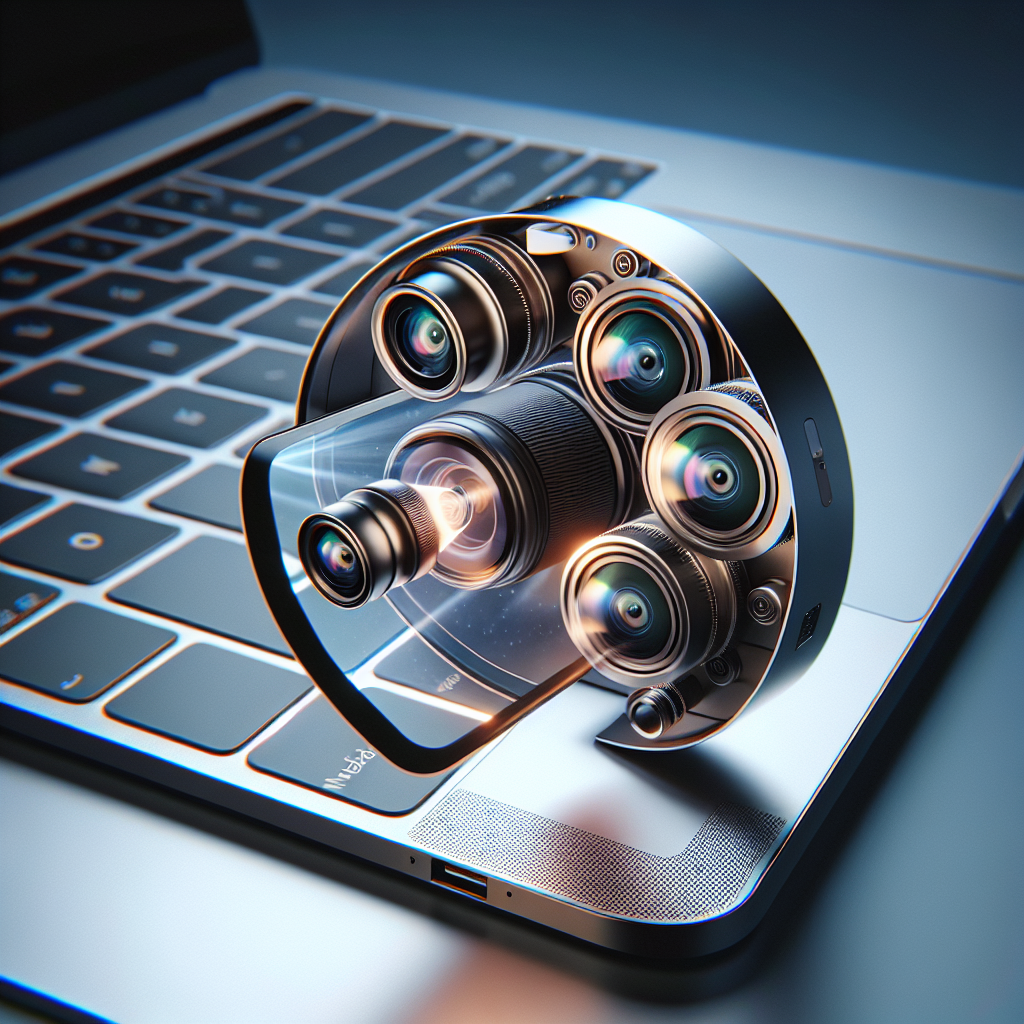Groundbreaking Transformations in MacBook Aesthetics: Swiveling Screens and Detachable Cameras
Apple’s cutting-edge design philosophy relentlessly redefines limits, and the most recent patent approval hints at a groundbreaking enhancement for the MacBook lineup. This fresh concept advocates for the incorporation of detachable cameras on a swiveling display, potentially doing away with the notch and transforming user interaction with their devices.
The Notch Dilemma and Apple’s Response
The MacBook Pro’s FaceTime camera has frequently faced criticism for its unimpressive quality in comparison to the iPhone. The existing notch design, although stylish, restricts the camera’s performance due to spatial limitations. Apple’s newest patent, “Camera integration for portable electronic devices,” delves into an innovative strategy by proposing larger, removable cameras affixed to a swiveling screen.
Decoding the Patent
The issued patent unveils Apple’s investigation into a bulkier camera system that could extend from the MacBook Pro’s lid. Departing from the sleek design ethos typically linked with Apple, this fresh approach underscores practicality over aesthetics. The patent depicts a camera system that can be shifted around the display, offering adaptability in usage.
Benefits of a Swiveling Display
The patent further proposes the concept of a rotatable display, allowing users to conveniently modify the screen’s orientation. This feature could enhance a variety of tasks, ranging from video meetings to creative activities, by providing adjustable viewpoints and camera angles. The prospective application of wireless technology could support this design, reducing strain on flexible cables.
Detachable and Interconnected Camera Modules
Apple’s patent indicates the possibility of integrating multiple camera modules that can communicate seamlessly. This arrangement could enable concurrent video recording from various perspectives, akin to the capabilities of the iPhone 11. Such a system could transform video conferencing and content creation on the MacBook, delivering a more engaging user experience.
Opportunity for Sidecar-like Wireless Displays
One fascinating element of the patent is the potential use of the display as a removable, wireless monitor. This idea could enhance the MacBook’s capabilities, allowing users to relocate the screen separately from the keyboard. Such a feature could address a variety of user requirements, from presentations to teamwork scenarios.
Summary
Apple’s patent for detachable cameras and a swiveling display on the MacBook marks a noteworthy shift from conventional laptop design. By emphasizing functionality and user engagement, Apple seeks to enrich its offerings with adaptable, innovative traits. While these ideas currently reside in the patent phase, they provide insight into the future of MacBook design and Apple’s dedication to advancing technological frontiers.
Q&A
Q1: In what way will the new camera system enhance video quality on MacBooks?
A1: The newly designed camera system may accommodate larger sensors, likely improving video quality and enabling dual-camera configurations for concurrent front and rear video recording.
Q2: What advantages does a swiveling display present?
A2: A swiveling display offers versatile viewing angles and camera placements, improving functionality for video calls, presentations, and creative tasks.
Q3: Will a swiveling display compromise the MacBook’s sturdiness?
A3: Although swiveling displays introduce additional mechanical elements, Apple’s design will probably prioritize durability, potentially applying wireless technology to lessen wear on internal cables.
Q4: How could the detachable camera modules interact among themselves?
A4: The patent proposes the use of wireless communication for the modules, facilitating synchronized video capturing and enhanced conferencing potential.
Q5: Can the detachable screen feature make MacBooks more adaptable?
A5: Absolutely, a detachable screen could broaden the MacBook’s utility, allowing it to serve as an independent device for presentations, collaborations, and media consumption.
Q6: Is this patent poised to be realized in the near future?
A6: While patents hint at possible future developments, immediate implementation is not guaranteed. Nevertheless, they mirror Apple’s persistent commitment to innovation and design advancement.